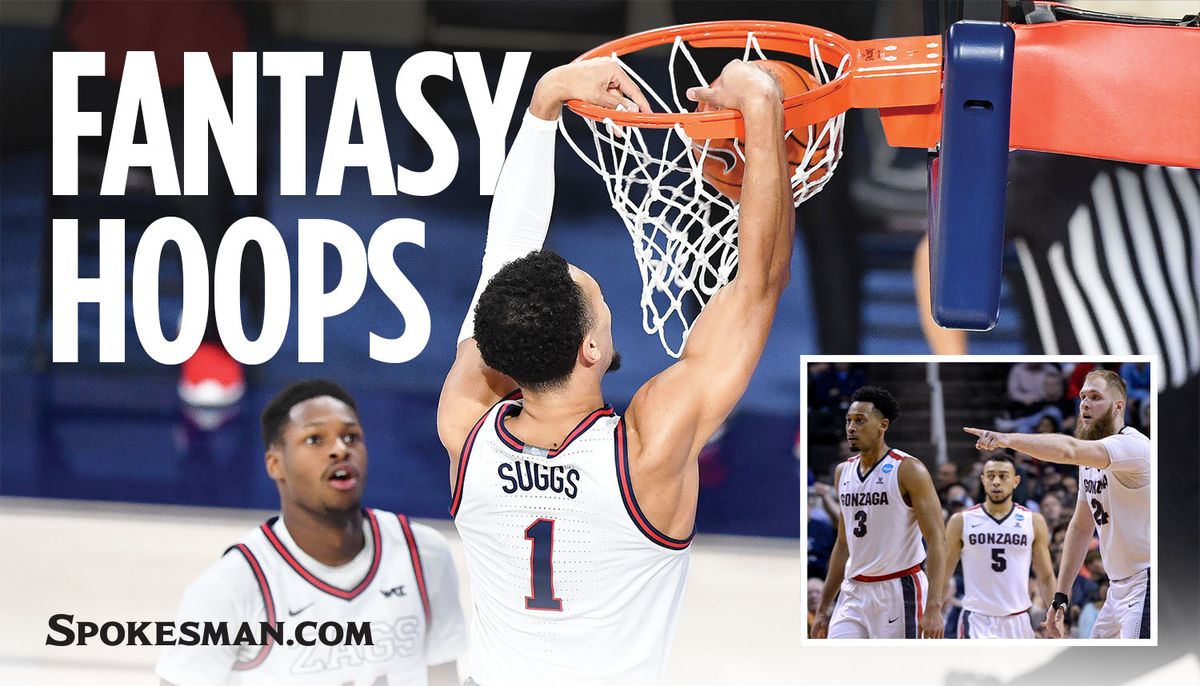The great debate: Gonzaga’s 2017 top-ranked defense vs. 2021’s historic offense

INDIANAPOLIS – John Jakus and Rem Bakamus have an on-going discussion about Gonzaga’s 2017 team and the current Zags.
Both were part of the 2017 Zags – Jakus as director of basketball operations, Bakamus as a walk-on player – that finished 37-2 and led inside the 2-minute mark before falling to North Carolina in the national championship game.
Both are now at Baylor, Jakus as an assistant coach and Bakamus as a grad assistant, but that doesn’t prevent them from occasionally talking Gonzaga basketball.
When circumstances allow, they widen the circle to include insiders like GU assistant coaches Brian Michaelson and Tommy Lloyd, head coach Mark Few and former coordinator of analytics Riccardo Fois.
“Rem and I have this debate all the time,” said Jakus, when Baylor and Gonzaga were a few days away from playing their NCAA Tournament openers. “I just have a spot in my heart for the 2017 team. I have a Final Four ring in my office. Those guys gave that to me. I’ll love that team and staff forever.
“This team they have, it’s the first time I’ve seen four guards on the floor and the four-around-one is certainly the only time in my time of knowing them.”
Former Zags guard Dan Dickau, an All-American in 2002, enjoys the styles contrast of 2017 vs. 2021, but acknowledges his pick is influenced by his fondness for one particular side of the ball.
“That’s a tough one because it’s a historically great defense versus a historically great offense,” said Dickau, who keeps a close watch on his alma mater as an analyst on Gonzaga television broadcasts. “I’m an offensive guy, so I’m going to have to go with this year. The 2017 team had history at its fingertips, too, before (losing to) BYU (in the regular-season finale).
“This offense … USC has been playing as good as anyone defensively, guarding phenomenally inside the 3-point line and Gonzaga carved them up.”
That win propelled top overall seed Gonzaga (30-0) into the Final Four against 11th-seeded UCLA at 5:34 p.m. at Lucas Oil Stadium. No. 1-seeded Baylor faces second-seeded Houston in Saturday’s first game.
The current Zags put up staggering stats. They play a lot of “small ball,” as Jakus mentioned, with Corey Kispert at the ‘4’. They get from point A (opponent’s rim) to point B (GU’s rim) in warp speed.
“The game speed was like a thousand miles per hour,” Norfolk State’s Kyonze Chavis said after a 98-55 first-round loss to Gonzaga. “They do everything right, limited mistakes. It was just reality when you got out there on the court, playing against a bunch of pros, actually.”
The 2017 crew was No. 1 in KenPom’s adjusted defensive efficiency metrics, a program first. It was steered by point guard Nigel Williams-Goss and had an imposing frontcourt with Przemek Karnowski, Johnathan Williams, Zach Collins and Killian Tillie. Jordan Mathews and Josh Perkins were 3-point threats.
They weren’t as explosive as the current team, but they were an ideal match with their defensive prowess. They were experienced and produced high-level performances nearly every game.
“That team had two really good point guards in Nigel and Josh, very similar to this year with (Jalen) Suggs and (Andrew) Nembhard,” Dickau said. “They had incredible size and were tremendous defensively, which was something for so many years the Zags got harped on for being so good offensively but they couldn’t defend.”
What’s happened since 2017 reflects the program’s upward trajectory in recruiting and the coaching staff’s knack for tailoring the system to fit the personnel.
The Zags were a No. 1 seed in 2019 before falling in the Elite Eight. Rui Hachimura and Brandon Clarke became the first GU duo taken in the first round of the same draft. Last year’s team finished 31-2 and was essentially a lock for a No. 1 seed before the NCAA Tournament was sidelined by the COVID-19 pandemic.
“Everybody that follows the program was hoping for a boon in recruiting and five-stars after that season,” Dickau said. “But people don’t realize that it takes time to develop those relationships, and it was just starting to become cool on the national stage to be recruited by Gonzaga.
“Now they’re in the mix for a lot of really good kids, but Gonzaga is very selective with those high-level guys. They still have to fit the mold of wanting to be in the gym, wanting to be coached and fit into a team culture.”
The present-day Zags have probable lottery picks in Kispert and Suggs, who is in the conversation for No. 1. They lead the nation in scoring (91.6) and field-goal percentage (54.9) and rank second in assists (18.6).
“Kispert’s experience, Suggs’ athleticism, they make six or seven out of 10 layups with (Drew) Timme, the maturing of Nembhard and (Joel) Ayayi,” Jakus said. “They’ve figured out a new way to play the Zag offense that makes them tough to stop. That’s pretty special and a credit to the staff.”
The Zags are averaging 88.3 points in the tournament. They’re the sixth team to win their first four games by 15-plus points since the tournament expanded to 64 teams in 1985.
“We always wait every year to see what kind of pieces we’re going to have and how they are all going to fit together,” Few said. “In our minds, we play differently every year. Last year obviously with Filip (Petrusev), we were very inside-oriented. The ’17 team was inside-oriented.
“This year, technically, we’re playing small ball with Corey running around at power forward, so it’s really energetic and fun. This year’s team plays better without sets, by and large, and our flow is probably the best thing we do.”